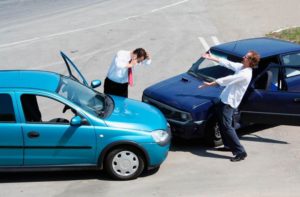
Car Insurance
More than 40,000 people die each year due to car accidents in the USA. Car insurance is crucial if you wish for protection in the case of accidents. There are two types of car insurance: mandatory and optional car insurance.
How familiar are you with car insurance? In this article, we’ll give you an in-depth guide to the different types of car insurance. Keep reading to be well-informed so that you can choose the right insurance for yourself.
Understand the Available Types of Car Insurance Options
With the numerous car insurance options available, it can be challenging to understand what type of car insurance is right for you. Keep reading and choose the best car insurance coverage for your needs.
Liability Coverage
Liability coverage is the most basic form of car insurance. It is a legal requirement in most states. It covers damage or injury you cause to others or their property while driving your vehicle.
This includes bodily injury liability and property damage liability. Bodily injury liability covers medical expenses, lost wages, and other damages incurred by people injured. This is for accidents where you are at fault.
Property damage liability covers damage to property such as another vehicle, a fence, or a building.
Collision Coverage
Collision coverage provides coverage for damages to your vehicle if you are in an accident, regardless of who is at fault. Collision coverage pays for repairs or the replacement of your vehicle if it is damaged or destroyed in an accident.
If you have a car loan, the lender may require you to have collision coverage to protect their investment in the vehicle.
Comprehensive Coverage
Comprehensive coverage provides coverage for damages to your vehicle that are not caused by an accident. It covers damage or loss caused by theft, vandalism, weather events, and other non-collision events.
Comprehensive coverage also includes coverage for glass damage, such as a cracked windshield.
Personal Injury Protection (PIP)
Personal injury protection (PIP) covers medical expenses and lost wages for you and your passengers in case of an accident. This is regardless of who is at fault. PIP coverage is required in some states, while it is optional in others.
PIP coverage also includes coverage for rehabilitation, funeral expenses, and childcare expenses.
Uninsured/Underinsured Motorist Coverage
Uninsured/Underinsured motorist coverage provides coverage in case you are in an accident with a driver who does not have insurance or has insufficient insurance coverage to pay for the damages. This type of coverage also includes coverage for hit-and-run accidents.
Gap Insurance
Gap insurance covers the difference between what you owe on your car loan or lease and the actual value of your vehicle.
In case of an accident where your vehicle is totaled, the insurance company will only pay the actual cash value of the vehicle. This may be less than the amount you owe on your loan. Gap insurance covers the difference between the two amounts.
Rental Reimbursement Coverage
This covers for the cost of a rental car you can use while your vehicle undergoes repair or replacement after an accident. Rental reimbursement coverage is typically optional and has a daily limit and a maximum limit.
Roadside Assistance
Roadside assistance provides coverage for emergency services. You might need towing, battery jump-start, fuel delivery, and lockout assistance. It is typically an optional coverage and has a limit on the number of services per year.

Choose the Right Car Insurance Coverage
The first step is to determine your state’s minimum car insurance requirements. You should then consider your own financial situation and determine how much coverage you can afford.
It is always better to have more coverage than the minimum requirements. This will ensure you are adequately protected in case of an accident.
Consider your vehicle’s value. If you have an older vehicle, you may not need comprehensive or collision coverage. The cost of the coverage may exceed the value of the vehicle.
On the other hand, a newer, more expensive vehicle may need comprehensive collision coverage. It may be necessary to protect your investment.
Consider your driving habits and risks. Let’s say you drive in areas with high rates of car theft or accidents. You may want to consider adding comprehensive and collision coverage to your policy.
Let’s say you have a long commute or frequently drive with passengers. You may want to consider adding personal injury protection or uninsured/underinsured motorist coverage to your policy.
Be sure to compare quotes from multiple insurance companies to ensure you are getting the best coverage at the best price. Look for discounts such as safe driver discounts, multi-policy discounts, and good student discounts to help lower your insurance premiums.
Make a Car Insurance Claim
You may need to file a claim for car insurance after an accident. You will need to provide your insurance company with your policy number, the accident date and location, and the contact information of another driver (s) and any witnesses.
You will have to provide a description of the accident and damages or simply a copy of the police report (if available). Your insurance company will then investigate the claim. They’ll determine the coverage amount based on your policy and the circumstances of the accident.
If you are at fault for the accident, your insurance company will pay for damages to the other driver’s vehicle and any injuries they incurred. If the other driver is at fault and has insurance, their insurance company will cover the damages.
If you are in an accident with an uninsured driver, you may need to file a claim with your own insurance company. Use your uninsured/underinsured motorist coverage to receive compensation for your damages and injuries.
Get the Right Vehicle Insurance
Car insurance is a vital aspect of owning and operating a vehicle. There are several types of car insurance available. Each offers different levels of coverage.
Choose the right car insurance coverage for your needs and budget. Be sure to compare quotes from multiple insurance companies. Look for discounts to help lower your premiums.
Protect yourself and your vehicle from financial losses in case of an accident. Have all the necessary information and documentation ready when filing a claim.
Visit our website for more helpful information about your success!







